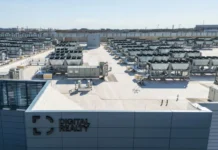New York — OpenAI, the company behind ChatGPT, has reportedly ordered hundreds of billions of dollars’ worth of chips as it races to build the computing power needed to stay ahead in artificial intelligence — but investors are now asking how it plans to pay for it.
In just a few weeks, the San Francisco startup has committed to buying around 26 gigawatts’ worth of advanced processors from Nvidia, AMD, and Broadcom — more than 10 million chips that would consume as much energy as 20 nuclear reactors.
“They will need hundreds of billions of dollars to live up to their obligations,” said Gil Luria, managing director at D.A. Davidson, noting that the sheer scale of these commitments is “unprecedented.”
Despite OpenAI’s booming popularity, the company doesn’t expect to turn a profit until 2029 and is still forecasting billions in losses this year, even with projected revenue of about $13 billion.
OpenAI declined to comment on how it plans to finance the massive orders.
Creative Financing Ahead
In a CNBC interview, co-founder Greg Brockman admitted that building enough computing infrastructure to handle the “avalanche of demand” for AI will require creative financing mechanisms.
Chipmakers, meanwhile, are being tight-lipped. Nvidia, AMD, and Broadcom all declined to confirm details of their agreements with OpenAI.
However, sources say Nvidia plans to invest up to $100 billion in OpenAI over several years to develop what could become the world’s largest AI infrastructure.
That money would flow back to Nvidia itself, since OpenAI would spend it buying Nvidia’s chips — a sort of “circular financing” model in which Nvidia both funds and profits from OpenAI’s growth.
AMD, by contrast, has reportedly offered OpenAI the option to acquire equity in the chipmaker — a rare and unconventional deal in tech finance, seen by analysts as AMD’s attempt to gain visibility in a market still dominated by Nvidia.
“This represents another unhealthy dynamic,” said Luria, suggesting the deal underscores AMD’s “desperation” to grab market share.
The Stakes: Boom or Bust
Analysts say the risks are enormous.
OpenAI’s co-founder and CEO Sam Altman, wrote Stacy Rasgon of Bernstein Research, “has the power to crash the global economy for a decade — or take us all to the promised land.”
“Right now,” Rasgon added, “we don’t know which is in the cards.”
Even if OpenAI sold off shares at its current $500 billion valuation, that wouldn’t be enough to cover the chip commitments, according to Luria. That leaves the company likely needing to borrow heavily, possibly using the chips themselves as collateral for future loans.
Meanwhile, Google and Meta — both OpenAI competitors — can fund their AI ambitions with billions in advertising profits, giving them a cushion OpenAI doesn’t have.
Bubble Fears Return — or a Different Era?
The scale of spending has sparked warnings of a new tech bubble, echoing the dot-com boom of the 1990s, when sky-high valuations eventually led to a market crash.
But not everyone sees history repeating itself.
“There is very real demand today for AI in a way that seems a little different than the boom in the 1990s,” said Josh Lerner, a Harvard Business School professor who specializes in venture capital.
CFRA analyst Angelo Zino agrees, pointing to OpenAI’s explosive growth and its more than 800 million ChatGPT users as proof that partnership-based financing — involving investors, chipmakers, and cloud providers — might make strategic sense.
Still, Lerner added, “It’s a real dilemma. How does one balance this future potential with the speculative nature of these investments today?”
In short, OpenAI’s push to secure tens of millions of chips signals unmatched ambition — but also exposes the company to enormous financial risk. Whether it ends up transforming global technology or sparking another bubble will depend on how well it can balance innovation, funding, and scale in the years ahead.







